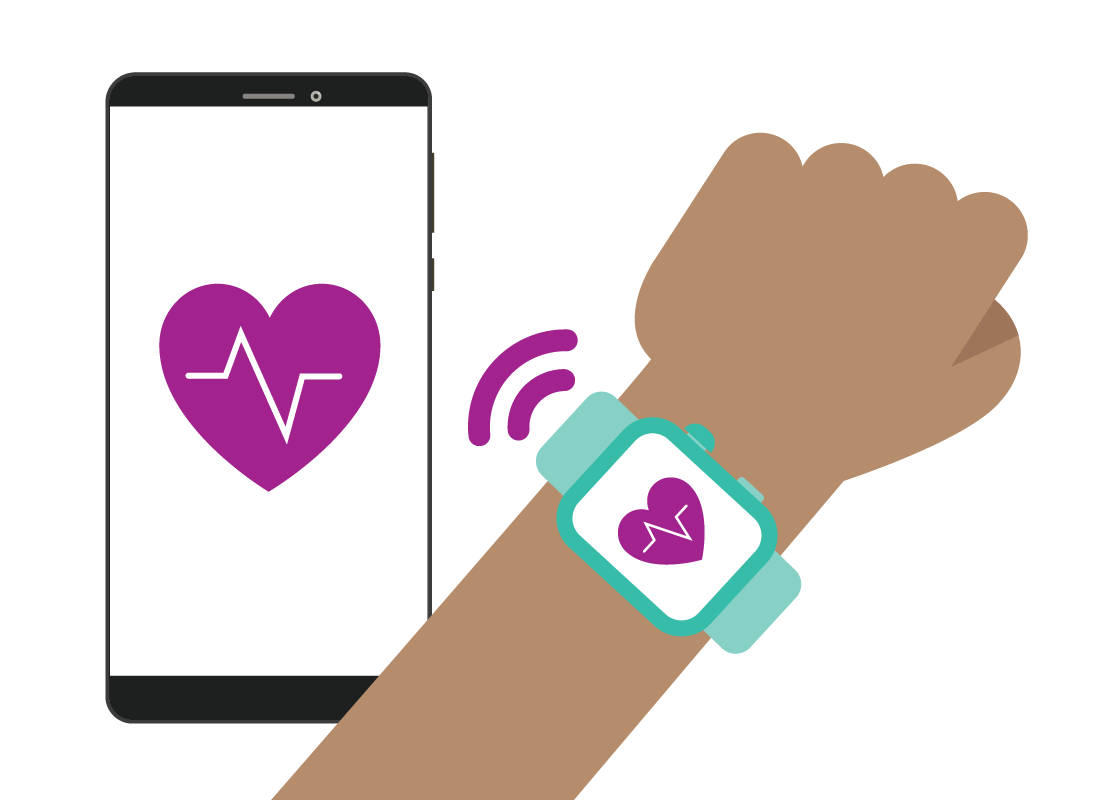Fitness apps and devices to monitor your health
Learn about using a health suite or standalone health app on your smartphone to create a health profile, and discover resources to help motivate or inform you about healthy living.
Your smartphone includes an app which offers a suite of health-related functions. Some examples of a health suite app include:
- Google Fit for Android and iPhone
- Apple Health for iPhone only
- Samsung Health for Samsung phones.
You can choose to use one of the health suite apps, or download a standalone health app from your phone’s app store. For example:
- Strava is a running and walking app
- Down Dog offers apps for yoga, meditation and workouts.

Creating a health profile
When you set up a health app, you create a profile. This can be:
- Your phone account, such as your Google Account or Apple ID
- A new and separate account, just for that app. This account lets the app remember your health data and track it over time.
All about health suite apps
Health apps for smartphones and smartwatches are designed to automatically detect exercise. This can include:
- Walking
- Running
- Cycling
- Swimming
- Sleeping
The app uses data from sensors on your smartphone or a smartwatch to:
- Try to guess which activity you are doing now
- Measure your heartbeat (on some phones, all smartwatches)
- Keep count of your steps and activity
- Remind you to move around to meet daily goals.
All about smartwatches
A smartwatch or fitness watch is really a small computer the same shape as a traditional wristwatch. Features can include:
- GPS for tracking location
- Accelerometer for speed and other movement
- A 4G connection for data without your phone
- Fall detection and automatic emergency services dialling
- Heart rate monitor
- Blood oxygen level sensor
- Barometer for altitude.
A smartwatch needs to be connected to your smartphone to use all its features:
- Your phone’s wireless Bluetooth function keeps the watch connected
- A smartwatch also uses your home Wi-Fi to access and share data to the cloud
- Some smartwatches have a 4G mobile data connection to access the internet while you’re out and about
- A 4G smartwatch needs a SIM with either its own mobile data plan, or one that is shared with your mobile phone plan.
A smartwatch includes a touch display, which along with the time, can also show information from health apps, a map, your heartrate, and much more.
Smartwatch alternatives
Other health gadgets include pedometers, which track steps, and fitness trackers which are like small smartwatches with fewer features. Both are cheaper than a smartwatch but they have fewer features and some can’t connect to your phone for convenient logging of your activity.
Understanding your health profile
When you use a health suite app like Google Fit, you will create a health profile:
- Set up the profile using your Google Account and password, which keeps your health data safe and secure
- See daily and weekly exercise goals on Google Fit’s main screen
- Connect to your smartwatch or other health device
- See some positive advice and suggestions about health and fitness
- Enter personal information such as height, weight, and age, to get personalised results and recommendations
- Google Fit’s health recommendations are based on those provided by the World Health Organisation (WHO)
- Tap different panels in the app to explore more features.
Other fitness apps and resources
There are other health apps and resources that you can use alongside or instead of your health suite app. You can find apps on your phone’s app store, and they usually focus on one thing. Examples include:
- Down Dog for yoga
- Strava for running and cycling
- Map My Walk for walking.
Other things to keep in mind about health apps:
- Some have a smart TV version so you can use the big screen for guided routines and workouts
- You can sync data from some apps with your main health suite app and profile
- If you don’t want a profile, some apps let you use them casually, with no data recording
- Many apps have a subscription service costing $10−15 a month
- You may get a short free trial, or there may be a free version of the app that has fewer features
- Podcasts are also a great resource as you can exercise while listening
- Find podcasts by searching online, or in your podcast app.